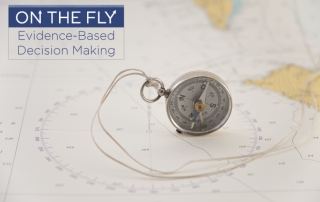
Re-visioning funder impact
 When it’s hard to see the forest for the trees, it turns out to be not so good for the trees– or the forest.
When it’s hard to see the forest for the trees, it turns out to be not so good for the trees– or the forest.
Jennifer Teunon, the Executive Director of the Medina Foundation has recently written a thoughtful piece on the Philanthropy Northwest blog (reposted from National Center for Family Philanthropy) about the need for grantmakers to re-think their approach to funding for non-profit organizations. She does a great job of describing the corrosive real-world effects on grantees of the program-specific approach to funding favored by most funders in contrast to a general operations funding approach. When funders only look at the specific programs that a non-profit operates rather than its work as a whole (i.e., the infrastructure required to support the whole package), valuable staff time is bled off to respond to ever more granular grantwriting demands. On top of that added stress, program-specific funding also fragments organizations and promotes a silo mentality, sapping a non-profits’ vitality. We appreciate Jennifer’s shout-out to nonprofit leaders who are calling attention to this problem such as our friend Vu Le of Rainier Valley Corps, whose blog often takes on this topic with insight and unicorn jokes.
We also appreciate Jennifer’s recognition that an underlying factor contributing to grantmakers’ narrow focus on programmatic outcomes is the grantmakers’ need to demonstrate its own impact. As she puts it, “I believe [a grantmakers’ tendency towards a granular focus on programs] is primarily because foundations want to understand and quantify their own impact. By earmarking dollars to a specific program, many foundations hope to draw a line from the dollars they give to the outcomes nonprofits achieve.”
And that cuts to the heart of the problem… […]
Evidence-Based Decision Making — On the Fly!
Evidence-based policy. Evidence-based research. Evidence-based practice. Evidence-based management.
Chances are, you’ve come across at least one of these terms, and you’re aware that the Age of Evidence is upon us. Decisions must be grounded in evidence in order to be valid and effective. Facts are in. Intuition, habit, and tradition are out.
As evaluators, we’re big fans of evidence, and we applaud the notion of systematically using the stuff to make good decisions. In fact, our mission at TrueBearing is to help our clients do just that: implement evidence-based decision making (EBDM). We’re thrilled to see a growing mountain of studies that carefully document the value of EBDM– this is the kind of thing that makes an evaluator’s heart race! But the EBDM term also gets thrown around a lot, with some questionable arguments about what EBDM is, how it can (and should) be used – and frankly, some of what we’ve heard doesn’t do it justice. […]
Information is even more beautiful in 2016
 Visualize 2016!
Visualize 2016!
Over the last decade or so, strategic planning and evaluation geeks like us have been watching the dawn of a golden age of evidence-based decision making– and […]
Trends in US Drug Fatalities
The Centers for Disease Control have produced a great data visualization on the rising rate of drug-overdose fatalities in the United States over the past decade. Click on the Storypoints– a great feature in Tableau– to […]
How missing data can perpetuate injustice
I had the opportunity recently to attend a solidarity rally in support of the Charleston 9 at First A.M.E. Church in Seattle. The room, though packed and sweltering, was filled with an overwhelming sense of a community unifying for change. It was powerful.
Among the speakers was Dr. Sheley Secrest with the Seattle- King County NAACP. Dr. Secrest’s work focuses on economic development, and she spoke of a meeting at Boeing in the wake of significant recent layoffs. When she asked about data on who was being laid off – by race, hire date, and so on – she was told “Boeing doesn’t track that information.”
For me, Dr. Secrest’s observation resonated as another example of data (or in this case, its absence) being used as a weapon. In The Current we recently reflected on the weaponization of data as part of a conversation with our friends and colleagues, Vu Le and Dr. Jondou Chen. Data can be weaponized, as well as the absence of data – and in some ways, this latter form is more insidious. […]
Data visualizations: An interactive tool to tell your program’s story
One tool we use in our strategic planning and evaluation work with clients is called a data visualization dashboard. Dynamic and interactive, a data visualization dashboard, or “viz,” displays an organization’s key performance indicators at a single glance. More than that, a viz allows a user to quickly ask their own questions of the data, making interacting with your data painless (and even fun!). […]



